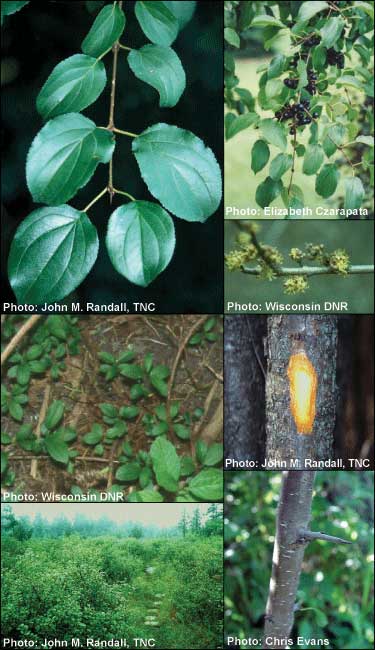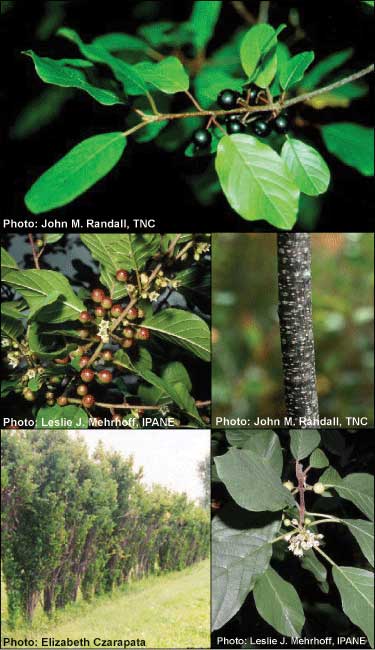|
Common Buckthorn (Rhamnus cathartoca) and Glossy Buckthorn (Frangula alnus)
Why are these plants a problem? Both buckthorn species rival autumn olive in terms of their aggressive growth habits in natural areas, spreading both by seeds and sprouting new shrubs from roots. Glossy buckthorn has the capacity to replace entire wetland plant communities, and produces chemicals that are toxic to frogs and salamanders, and can even kill their young before they hatch from eggs. Common buckthorn, which serves as the primary overwintering host of the soybean aphid, a serious agricultural pest, grows aggressively in areas with drier soils. Neither plant supports the diversity of birds, butterflies, and other wild creatures once sustained by the plants they replace. In northwest Michigan, some natural areas have been heavily impacted, whereas in other natural areas populations are small or not yet present. What do common and glossy buckthorn look like? Both species are small trees (or large shrubs) reaching 15-25 ft in height. Compare leaf samples with the images to the left and above-right. Visit the Midwest Invasive Species Information Network to learn more about specific ID characteristics of each species (Misin.msu.edu/). How do I manage invasive buckthorns? Explore landscape alternatives like the spicebush (pictured below and to the right in bloom), and enjoy the spicebush butterflies and cecropia moths you’ll attract. Young buckthorn shrubs may often be handpulled without trouble, especially in our sandy soils. For larger populations, explore management recommendations at the Michigan DNR’s invasive species website, Michigan.gov/invasivespecies. |
| habitatmatters.org |
Contact US231-252-4148
3334 Veterans Drive Unit A Traverse City, Michigan 49685 |
Pleasant Peninsula Design, Habitat Matters 2017



